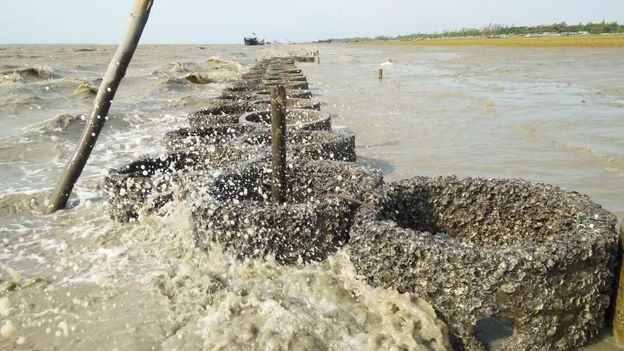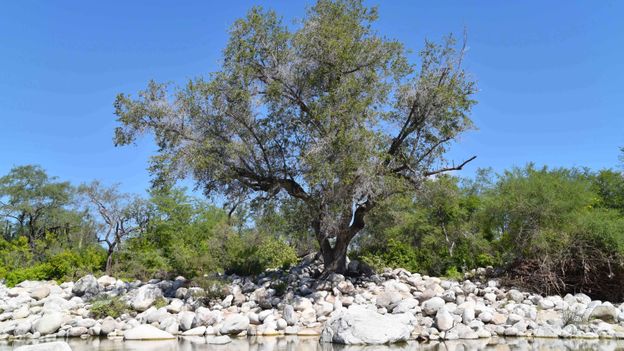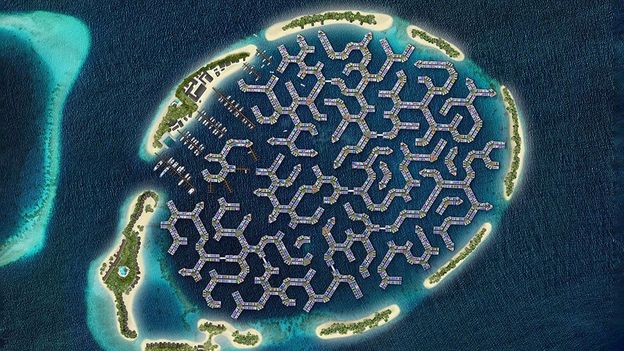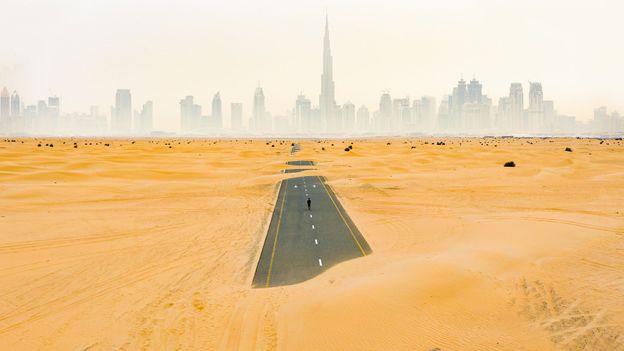But while they didn’t consume the oysters directly, the experienced Kutubdia fishermen were well aware of the fertile habitat and plentiful fishing grounds that oyster reefs provide.
“We started finding mud crabs in the rings, drawn by the reef,” says Chowdhury. “Mud crabs have immense export value. 1kg can be sold for $10 [£7.30]. Two to three families can easily make a livelihood off a small oyster reef by adding traps,” Chowdhury says. Other species the research team found included barnacles, sea anemones, gastropods and polychaetes (marine worms) – all of which can attract fish.
Osman Ali, a 55-year-old fisherman who has spent his life on the island, says after the reefs began to grow, he no longer needed to work such strenuous hours to make a living. “We find a higher abundance of fish, shrimp and crabs near the kostura,” he says. And while the reef spanned only 100m (328ft), Ali is convinced: “If a larger reef had been created, it would increase our likelihood of getting more fish.”
“I proposed a partnership with the fishermen,” says Chowdhury. “If you take care of the reef, it will take care of you.”
Ripple effects
While the fish were welcome, it was the accumulation of sediment behind the reef that began to make a difference.
“Depending on the environment you’re in, sedimentation gradually accumulates on the lee side,” Dankers says. “In the Netherlands, we saw 1-5cm (0.3-2 inches) a year. In Bangladesh we saw up to 30cm (12 inches),” she says. The massive amounts of Himalayan silt in the coastal deltas was the reason for such a marked difference.
“We talk about resources, but we ignore the sediment in our water,” says Chowdhury. “Billions of tonnes of sediment are flowing through our extensive Bhramaputra, Meghna and Ganges river network. If we could find a way to settle it in our coastline, we could make a new country.”
The reef helped sediment to accumulate for as far as 30m (98ft) behind it, Chowdhury found, and stabilised the silt even during the monsoon season. The reef completely dissipated waves lower than 50cm (20 inches), and those over 1m (40 inches) also had their force considerably reduced. It worked even in intense weather – observed when tropical cyclone Roanu, with wind speeds of 70-110kph (43-68mph), hit the study site in May 2016. The vegetation nearby flourished too compared with the control locations.
This vegetation could be crucial in helping restore the coast, as it does in other parts of the country. “Near the Sundarbans area [in the south-west], you don’t see erosion [because] mangrove forests act as a bioshield,” says Chowdhury.
This chimes with research by Susmita Dasgupta, an environmental economist at the World Bank. Mangroves are an effective way to protect against storm surges, she writes. The mangroves obstruct the flow of water with roots, trunks and leaves, reducing water flow velocity by 29-92%.
“You could have the oyster reef first, and behind that, the mangrove,” says Dankers. Many of the world’s coasts used to have a fringe of mangrove forest, she says, but much has been lost in the past century. “Depending on how extensive your mangrove system is – for instance, it might span a few kilometres – you may or may not need a dyke or wall as well.”












